The bit is the most basic unit of information in computing and digital communication. The name is a portmanteau of binary digit. The bit represents a logical state with one of two possible values. These values are most commonly represented as either "1" or "0", but other representations such as true/false, yes/no, on/off, or +/− are also widely used.

The IBM System/360 (S/360) is a family of mainframe computer systems announced by IBM on April 7, 1964, and delivered between 1965 and 1978. System/360 was the first family of computers designed to cover both commercial and scientific applications and a complete range of applications from small to large. The design distinguished between architecture and implementation, allowing IBM to release a suite of compatible designs at different prices. All but the only partially compatible Model 44 and the most expensive systems use microcode to implement the instruction set, featuring 8-bit byte addressing and fixed point binary, fixed point decimal and hexadecimal floating-point calculations.

Punched tape or perforated paper tape is a form of data storage device that consists of a long strip of paper through which small holes are punched. It was developed from and was subsequently used alongside punched cards, the difference being that the tape is continuous.
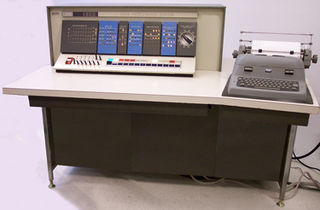
The IBM 1620 was announced by IBM on October 21, 1959, and marketed as an inexpensive scientific computer. After a total production of about two thousand machines, it was withdrawn on November 19, 1970. Modified versions of the 1620 were used as the CPU of the IBM 1710 and IBM 1720 Industrial Process Control Systems.

The IBM 650 Magnetic Drum Data-Processing Machine is an early digital computer produced by IBM in the mid-1950s. It was the first mass-produced computer in the world. Almost 2,000 systems were produced, the last in 1962, and it was the first computer to make a meaningful profit. The first one was installed in late 1954 and it was the most popular computer of the 1950s.
The UNIVAC Solid State was a magnetic drum-based solid-state computer announced by Sperry Rand in December 1958 as a response to the IBM 650. It was one of the first computers offered for sale to be (nearly) entirely solid-state, using 700 transistors, and 3000 magnetic amplifiers (FERRACTOR) for primary logic, and 20 vacuum tubes largely for power control. It came in two versions, the Solid State 80 and the Solid State 90. In addition to the "80/90" designation, there were two variants of the Solid State – the SS I 80/90 and the SS II 80/90. The SS II series included two enhancements – the addition of 1,280 words of core memory and support for magnetic tape drives. The SS I had only the standard 5,000-word drum memory described in this article and no tape drives.
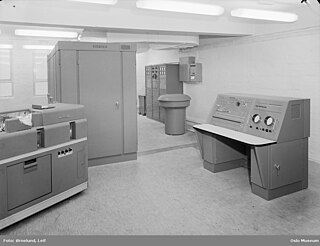
The DEUCE was one of the earliest British commercially available computers, built by English Electric from 1955. It was the production version of the Pilot ACE, itself a cut-down version of Alan Turing's ACE.

The Z22 was the seventh computer model Konrad Zuse developed. One of the early commercial computers, the Z22's design was finished about 1955. The major version jump from Z11 to Z22 was due to the use of vacuum tubes, as opposed to the electromechanical systems used in earlier models. The first machines built were shipped to Berlin and Aachen.

The Bendix G-15 is a computer introduced in 1956 by the Bendix Corporation, Computer Division, Los Angeles, California. It is about 5 by 3 by 3 feet and weighs about 966 pounds (438 kg). The G-15 has a drum memory of 2,160 29-bit words, along with 20 words used for special purposes and rapid-access storage. The base system, without peripherals, cost $49,500. A working model cost around $60,000. It could also be rented for $1,485 per month. It was meant for scientific and industrial markets. The series was gradually discontinued when Control Data Corporation took over the Bendix computer division in 1963.
The ICT 1301 and its smaller derivative ICT 1300 were early business computers from International Computers and Tabulators. Typical of mid-sized machines of the era, they used core memory, drum storage and punched cards, but they were unusual in that they were based on decimal logic instead of binary.
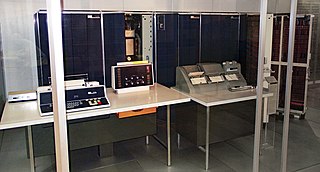
IBM 7070 is a decimal-architecture intermediate data-processing system that was introduced by IBM in 1958. It was part of the IBM 700/7000 series, and was based on discrete transistors rather than the vacuum tubes of the 1950s. It was the company's first transistorized stored-program computer.
The IBM AN/FSQ-31 SAC Data Processing System was a USAF command, control, and coordination system for the Cold War Strategic Air Command (SAC). IBM's Federal Systems Division was the prime contractor for the AN/FSQ-31s, which were part of the TBD 465L SAC Automated Command and Control System (SACCS), a "Big L" system of systems which had numerous sites throughout the Continental United States: "all SAC command posts and missile Launch Control Centers", a communication network, etc.; and the several FSQ-31 sites including:
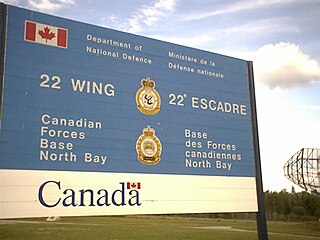
The AN/FSQ-32 SAGE Solid State Computer was a planned military computer of the United States Air Force. It was central for deployment to Super Combat Centers in nuclear bunkers and to some above-ground military installations. In 1958, Air Defense Command planned to acquire 13 Q-32 centrals for several Air Divisions/Sectors.

The RCA Spectra 70 is a line of electronic data processing (EDP) equipment that was manufactured by the Radio Corporation of America’s computer division beginning in April 1965. The Spectra 70 line included several CPU models, various configurations of core memory, mass-storage devices, terminal equipment, and a variety of specialized interface equipment.
BESYS was an early computing environment originally implemented as a batch processing operating system in 1957 at Bell Labs for the IBM 704 computer.

The Monroe Calculating Machine Mark XI was a general-purpose stored-program electronic digital computer introduced in 1960 by the Monroe Calculating Machine Division of Litton Industries. The system was marketed for "primarily for billing, and invoice writing", but could also be used for low-end scientific computing.
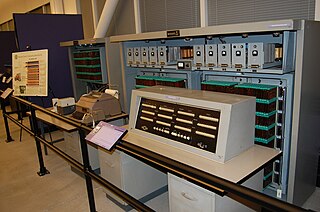
The Zuse Z23 was a transistorized computer first delivered in 1961, designed by the Zuse KG company. A total of 98 units were sold to commercial and academic customers up until 1967. It had a 40-bit word length and used an 8192 word drum memory as main storage, with 256 words of rapid-access ferrite memory. It operated on fixed and floating-point binary numbers. Fixed-point addition took 0.3 milliseconds, a fixed point multiplication took 10.3 milliseconds. It was similar in internal design to the earlier vacuum tube Z22. Related variants were the Z25 and Z26 models.

The ERMETH (Electronic Calculating Machine of the ETH) was one of the first computers in Europe and was developed and built by Eduard Stiefel and his team of the Institute for Applied Mathematics at the ETH Zurich between 1948 and 1956. It was in use until 1963 and is now displayed at the Museum of Communication Bern (Switzerland).
A track is a path on a recording medium. There are some variations in nomenclature; for some media a track is a logical path and for others it is based on the geometry of the medium. The term is not used for punched cards.














